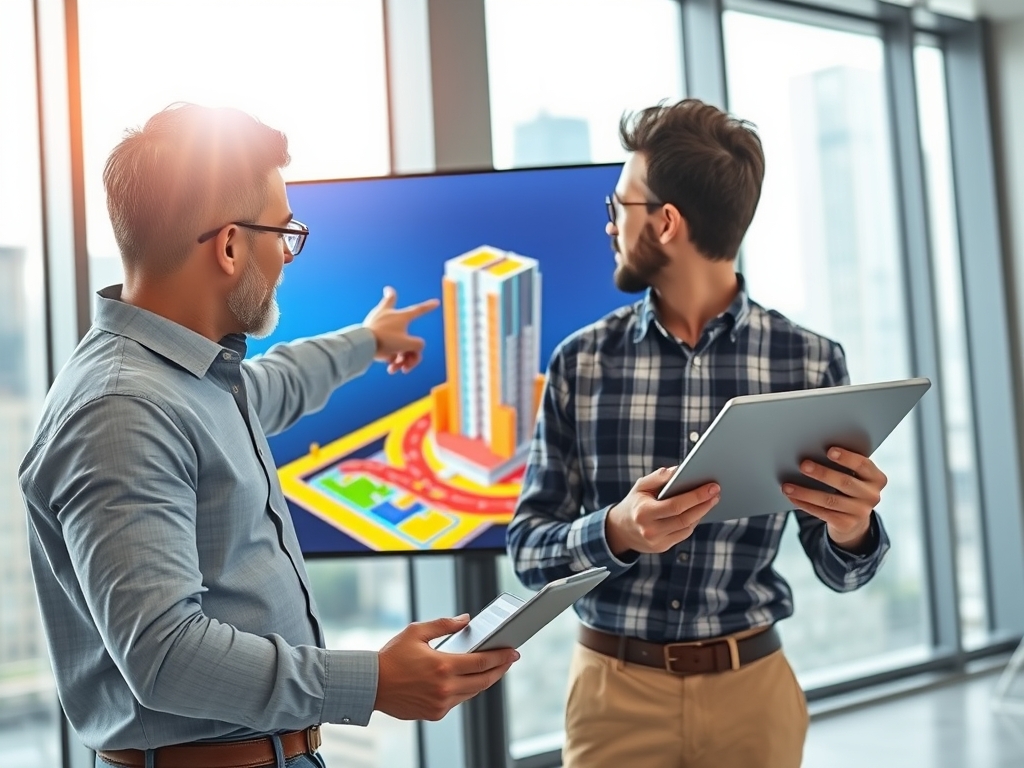Interactive 3D: Enhancing Collaboration Between Architects and Engineers

The relationship between architects and engineers has always been a dance of creativity and precision, vision and feasibility. Architects sketch the dreams, engineers calculate the realities, and together they build the world. Yet, this collaboration has often been hampered by one thing: communication. For decades, static plans, siloed tools, and fragmented workflows have stood in the way of truly seamless cooperation.
Enter interactive 3D.
Interactive 3D technology is more than just a tool—it’s a shared language. It bridges the gap between the artistic and the analytical, offering a dynamic space where ideas flow freely, conflicts are resolved in real time, and innovation thrives. Let’s explore how this technology is transforming the way architects and engineers work together.
Breaking Down Silos
In traditional workflows, architects and engineers often work in parallel rather than in tandem. Architects create designs, engineers review them, and the process repeats until both sides converge. This back-and-forth is not only time-consuming but also fraught with misunderstandings.
Interactive 3D changes this dynamic. By creating shared digital environments, it allows both parties to:
- Visualize Designs Together: Architects and engineers can explore the same model simultaneously, whether they’re in the same room or halfway across the world.
- Spot Issues Early: Structural inconsistencies, spatial conflicts, and design inefficiencies become immediately apparent in a 3D walkthrough.
- Iterate in Real Time: Changes can be made on the fly, with instant feedback from both sides.
Example: A Shared Vision in Action
In a recent high-rise development project, architects and engineers used a browser-based 3D tool to collaborate on the design of a complex facade. As the architect adjusted the curvature of the structure, the engineer tested its load-bearing capacity in real time. The result? A visually stunning design that met safety requirements without delays or rework.
Enhancing Precision and Creativity
Interactive 3D doesn’t just streamline workflows—it elevates them. By offering a richer, more intuitive way to explore designs, it empowers architects and engineers to push boundaries while staying grounded in practicality.
- For Architects: Interactive 3D provides a canvas for experimenting with bold ideas while immediately understanding their structural implications.
- For Engineers: It offers a clearer understanding of the architect’s vision, enabling innovative solutions that align with the design intent.
Beyond the Blueprint
Consider a bridge design project. Traditional methods might involve weeks of back-and-forth to align the aesthetic aspirations of the architect with the engineering constraints of load distribution. With interactive 3D, the two teams can work side by side, testing materials, stress points, and visual elements in a single shared environment. The bridge becomes not just a functional structure, but a work of art born from collaboration.
Improving Stakeholder Communication
Architects and engineers aren’t the only players in the construction game. Developers, contractors, and clients all have a stake in the outcome, and their input often shapes the final design. Interactive 3D makes this broader collaboration more effective:
- Engaging Presentations: Stakeholders can “walk through” a design rather than trying to interpret flat drawings.
- Clearer Feedback: Visualizing the project in 3D eliminates ambiguities, ensuring feedback is precise and actionable.
- Consensus Building: Seeing is believing, and a shared 3D model helps align diverse perspectives toward a common goal.
A Vision for the Future
Interactive 3D is more than a technological advancement; it’s a cultural shift. It fosters a new kind of partnership between architects and engineers, one defined by mutual respect, shared creativity, and a commitment to excellence.
Imagine a future where every project begins with a virtual handshake in a 3D model—where architects and engineers don’t just work together but truly think together. That’s the promise of interactive 3D: a world where collaboration isn’t just easier, it’s better.
In this space, the lines between disciplines blur, and the results speak for themselves: smarter buildings, more innovative designs, and a shared sense of achievement that turns good projects into great ones.